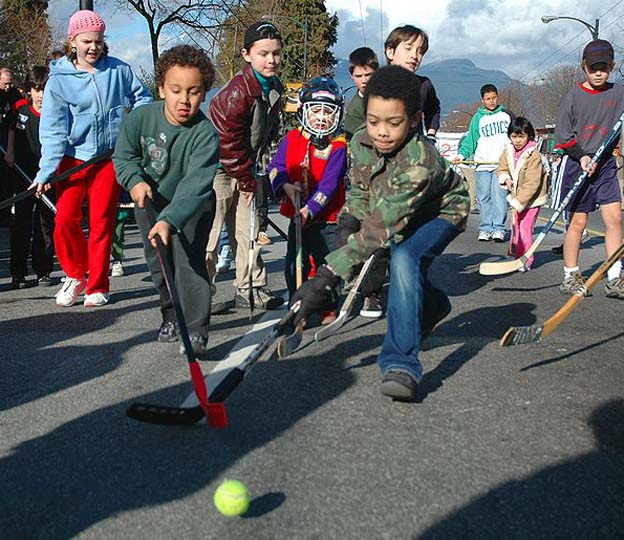When in doubt, sit them out

McMaster University’s CanChild Centre for Childhood Disability Research has issued guidelines for children with concussions, with steps to follow for returning safely to school and and athletic activities, such as road hockey.
‘When in doubt, sit them out’ should be the new catchphrase for parents and coaches of children who have received a concussion.
McMaster University’s CanChild Centre for Childhood Disability Research has issued guidelines for children with concussions, with steps to follow for returning safely to sport and school.
Children with concussions often head back onto the ice, field or full-time school much too soon, says occupational therapist and associate professor Carol DeMatteo.
“As a result many children have prolonged symptoms and are vulnerable to a second injury all because their brains didn’t have a chance to recover fully from the first injury,” she said. “These new guidelines are all about preventing a second injury and promoting a speedy but complete recovery.”
She said previous research done at McMaster showed how little was understood about concussions in children, so she and a team of researchers from CanChild and McMaster Children’s Hospital designed the guidelines specifically for children. The work was funded by the Canadian Institutes for Health Research.
The CanChild guidelines begin with no activity and complete rest before light exercise, then individual sport-specific activity, followed by sport-specific practice with the team without contact and sport-specific practice with the team and contact, before finally returning to activity, sport or game play.
These guidelines are different from post-concussion guidelines for adults, as they are much more conservative and return to activity is based on severity and on how long the child’s symptoms last, said DeMatteo.
“As children are students first and athletes second it was very important to also guide the return to school activities as these can cause as much overwork for the child’s brain as physical activity,” she said.
For returning to school, the guidelines begin with complete brain rest followed by gentle activity, and then heading back to school with modified academic work and decreased attendance at school. “Even riding a school bus is discouraged at this stage. Then the child progresses gradually to increasing the amount of work, attendance and eventually test-taking and homework, returning to normal routines but with good health.”
Laura Turner, a New Hamburg occupational therapist and the parent of a 10-year-old boy who recently suffered a blow to his head playing hockey, said she had heard of the guidelines and used them with her son Owen.
“They are user-friendly and provide a high-quality source of information,” she said. “It was really key for me to have the information to fall back on.”
She was able to use the concussion symptom checklist with Owen before taking him to a family doctor, and she was later able to point to the guidelines when working with his coach and school teachers about his recovery.
She said Owen had one week of no television, computers or books, followed by easing into some school and time playing with friends as he recovered.
The Ontario Neurotrauma Foundation has recently funded DeMatteo and colleagues from the Children’s Hospital of Eastern Ontario and Holland Bloorview Kids Rehabilitation Hospital to develop further guidelines for pediatric concussion/mild traumatic brain injury.
